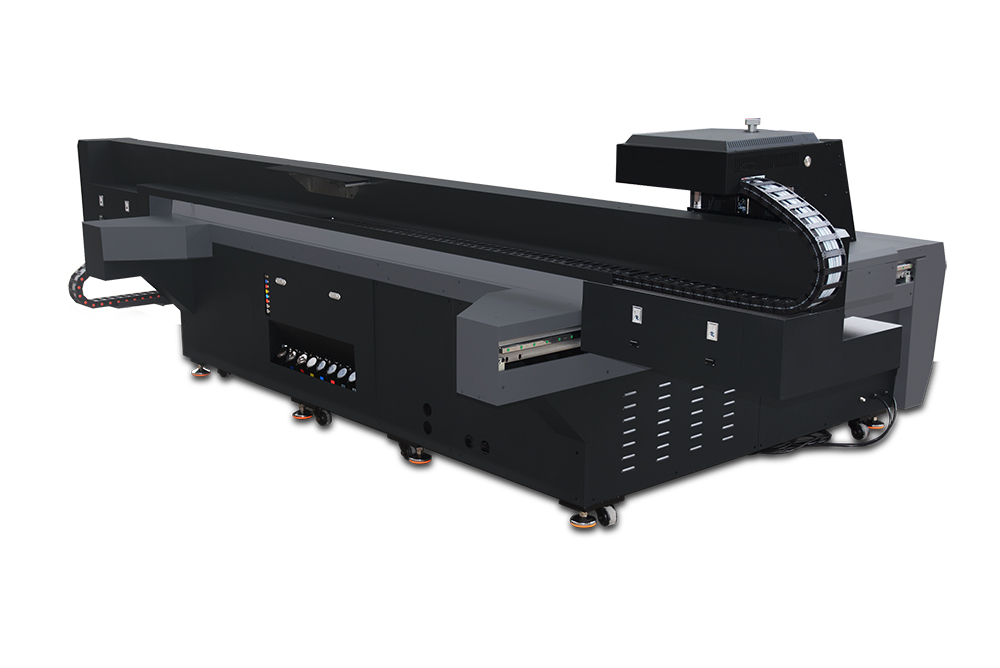UV Flatbed Printer: Common Problems with Inkjet Heads and Their Solutions
UV Flatbed Printer: Common Problems with Inkjet Heads and Their Solutions
The UV flatbed printer, with its ability to print directly onto a wide range of materials, has revolutionized the printing industry. However, like any complex machinery, it can encounter problems, especially with the inkjet heads. These problems, if not addressed promptly, can lead to reduced print quality, increased downtime, and even permanent damage to the printer. In this article, we’ll explore some common issues related to inkjet heads in UV flatbed printers and discuss effective solutions to these problems.

Problem 1: Clogged Inkjet Heads
Clogging is one of the most common issues with inkjet heads. Over time, ink residues can build up in the nozzles, impeding the flow of ink. This can lead to missing or faint print lines, affecting the overall print quality.
Solution: Regular cleaning and maintenance are essential to prevent clogging. Manufacturers often recommend specific cleaning routines, which typically involve flushing the inkjet heads with a cleaning solution to remove any blockages. Additionally, using high-quality inks can reduce the risk of clogging due to their purity and consistency.
Problem 2: Misaligned Inkjet Heads
Misalignment of the inkjet heads can cause banding, blurry prints, or color registration issues. This problem often arises due to physical movement of the heads during operation, wear and tear, or incorrect installation.
Solution: Regular checks and adjustments are crucial to maintain alignment. Many UV flatbed printers have built-in alignment tools that can help identify and correct misalignment issues. If manual adjustment is required, it’s essential to follow the manufacturer’s guidelines precisely.
Problem 3: Inkjet Head Wear
Inkjet heads are subject to wear and tear over time, especially in high-volume printing environments. This wear can lead to inconsistent ink droplet sizes, affecting print quality.
Solution: Regular inspections and timely replacements of worn parts are key. Manufacturers often provide guidelines on the expected lifespan of inkjet heads and recommend replacement intervals. Additionally, using inks recommended by the printer manufacturer can reduce wear and tear due to their compatibility with the printer’s inkjet heads.
Problem 4: Ink Leakage
Ink leakage can occur due to damaged inkjet heads, loose connections, or clogged nozzles. This not only affects print quality but can also damage the printer itself.
Solution: Regular inspections of the inkjet heads and connections are essential to identify and fix any potential leakages. It’s also important to use high-quality inks and to follow the manufacturer’s maintenance recommendations to prevent such issues.
Problem 5: Temperature Issues
Inkjet heads can be sensitive to temperature changes, and extremes in temperature can affect the viscosity of the ink, leading to printing issues.
Solution: Maintaining a stable operating temperature within the recommended range is crucial. This might involve investing in climate control systems for the printing environment, especially in areas with extreme temperature fluctuations.
Problem 6: Incorrect Ink Pressure
Incorrect ink pressure can lead to a variety of printing issues, including ink bleeding, inconsistent ink droplet size, and clogged nozzles.
Solution: Regular monitoring and adjustment of ink pressure are essential. Manufacturers provide guidelines on the optimal ink pressure range for their printers. It’s important to follow these recommendations and adjust the pressure accordingly.
Problem 7: Electrical Issues
Electrical issues, such as voltage fluctuations or power surges, can damage the delicate components of the inkjet heads.
Solution: Ensuring a stable power supply and investing in surge protectors can help mitigate these risks. Additionally, regular inspections of electrical connections and components can help identify and prevent potential issues.
In conclusion, maintaining the inkjet heads of a UV flatbed printer is crucial for optimal performance and print quality. Regular cleaning, inspections, and adjustments, along with using high-quality inks and materials, can significantly reduce the risk of encountering these common problems. By following the manufacturer’s recommendations and investing in proper maintenance, printer operators can ensure their equipment runs smoothly and efficiently for years to come.
Moreover, it’s important to note that prevention is always better than cure. Regular maintenance and inspections can help identify potential issues early on, reducing downtime and repair costs. By taking proactive measures, printer operators can not only extend the lifespan of their equipment but also ensure consistent, high-quality prints.
In addition to the solutions mentioned above, it’s also essential to train staff on proper printer operation and maintenance procedures. Well-trained operators can identify and address potential issues quickly, minimizing downtime and maximizing efficiency.
Finally, it’s worth mentioning that technology is constantly evolving, and printer manufacturers are continuously improving their products to address common problems. Staying up to date with the latest developments and upgrades can further enhance the performance and reliability of UV flatbed printers.
By following these guidelines and best practices, printer operators can ensure their UV flatbed printers remain in optimal condition, delivering high-quality prints for years to come.
